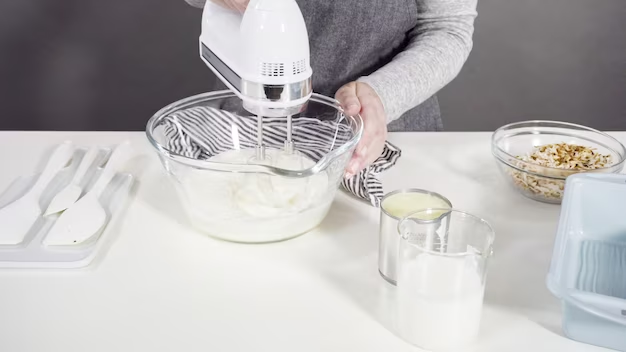Whipping in cooking is a technique used to incorporate air into a liquid or semi-solid food item. It results in the creation of a light, fluffy texture that can enhance the dish’s appearance, taste, and mouthfeel.
1. The Whipping Process
The whipping process involves agitating the food item vigorously, either by hand or with the aid of a mechanical device such as a whisk, an electric mixer, or a stand mixer. The action breaks up the food’s structure, allowing air to be trapped within. This transforms the ingredient into a frothy, airy mass.
In the context of whipping, several key factors influence the end result:
- Temperature: The temperature at which whipping is conducted can significantly impact the outcome. For example, cream whips better when it’s cold, while egg whites whip better at room temperature;
- Fat Content: Higher fat content can create a more stable, stiff whipped product. This is why heavy cream, with its high fat content, is often used for whipping;
- Sugar: The addition of sugar can stabilize the whipped product, preventing it from deflating too quickly.
2. Commonly Whipped Ingredients
Certain ingredients are commonly whipped in cooking to enhance their texture and incorporate them into various recipes.
- Egg Whites: When whipped, egg whites can increase in volume six to eight times, creating a light, airy texture. This technique is used in recipes such as meringues and soufflés;
- Cream: Whipped cream is a popular topping for desserts, adding a rich, creamy element. Its texture is achieved by whipping heavy or whipping cream until soft or stiff peaks form;
- Butter: Whipping butter makes it lighter and more spreadable. It’s often mixed with other ingredients like sugar for frosting recipes.
3. Whipping Equipment
For whipping, various tools can be employed:
- Whisk: The most basic tool for whipping, effective for smaller quantities. It requires physical effort but gives the cook control over the process;
- Handheld Mixer: A handheld electric mixer is a time-saving option that reduces the physical effort needed;
- Stand Mixer: A stand mixer is the best option for larger quantities and can whip at consistent speeds for longer periods.
Conclusion
Whipping is an integral part of many cooking processes, transforming the texture and appearance of various ingredients. It breathes life into dishes, making them lighter, creamier, and more visually appealing.
FAQ
When you whip to ‘soft peaks’, it means that the mixture should hold its shape briefly before collapsing when the whisk is lifted.
Not all liquids can be whipped. Those with a higher fat content, such as cream, or those with proteins that can trap and stabilize air bubbles, like egg whites, are suitable for whipping.
If your whipped cream isn’t thickening, it could be due to a few reasons, such as the cream being too warm, the bowl and whisk not being chilled, or the cream not having enough fat content.
